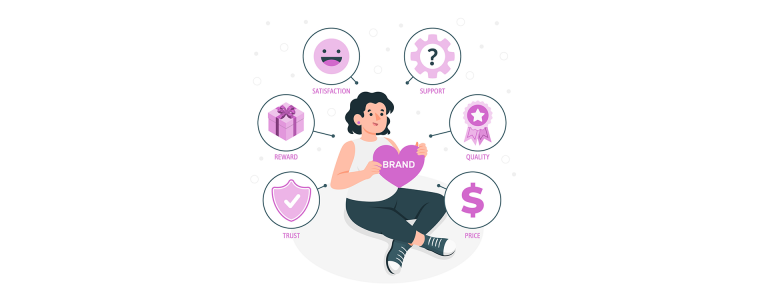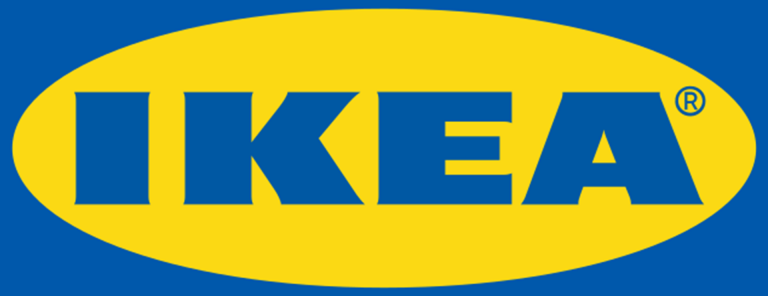Knowledge Base > Marketing Tips > 7 Easy Ways to Build Strong Brand Loyalty
7 Easy Ways to Build Strong Brand Loyalty
Often marketing professionals focus so much on acquiring potential customers that they forget their most valuable resource: their current customers. Focusing on customer retention is key if you want to build brand loyalty among customers you already have!
Research shows that more than half of consumers are willing to spend a higher price for an established brand they trust. A customer who has developed an emotional attachment to your brand remains a customer for much longer. Clients don’t buy from you simply because you provide the lowest cost – they simply recognize the value you provide.
Customers feel good about buying from you because they know you care about them, you offer a quality product or service, such as an online flipbook , and you show them appreciation. Building brand loyalty requires constant support – you need to encourage customers to work with your brand and rework your entire marketing strategy.
In this article, you will read what brand loyalty is, and how it can be developed and used in your business. We’ll give you examples of how to increase customer’s loyalty and what are examples of successful, preferred brands with great recognition.
What is brand loyalty?
Brand loyalty is the tendency of consumers to stick with one particular brand instead of another for an extended period of time.
Simply put, it happens when your current clientele actively decides to continue doing business with you and use exclusively your products and services. It’s not just about low price – your brand reputation is crucial to customer loyalty.

When customers have a positive experience with a company, they are more likely to respond positively to sales or loyalty programs and make additional purchases. This is true in every field. Take, for example, sugary drinks. For most of us, Pepsi and Coca-Cola taste the same, but there are people who only drink Coca-Cola and dislike Pepsi.
Brand loyalty involves the customer’s perception of the brand: this includes the customer’s experience with the brand, the company’s reputation, and even the company’s mission and values.
Why is brand loyalty important?
Loyal customers are a guarantee of your company’s continued profitability and expansion. It’s hard for you to attract new customers to stay afloat if you can’t keep the ones you already have.
To create brand loyalty, your company needs to earn trust, and brand loyalty leads and strategies can help you do that. A group of dedicated fans not only promotes growth, but it also acts as brand ambassadors, advertising your company to others. As a result, brand loyalty can be seen as part of a long-term tactic.

Companies that care about loyalty prioritize the satisfaction of their customers. They can’t allow poor customer service and widespread dissatisfaction, so they focus on constant customer contact. However, don’t overwhelm your loyal customer base with constant unnecessary marketing materials and repetitive messages.
Brand loyalty types

Hard-core brand loyalty
These types of customers are extremely excited about a particular brand and associate it only positively. They have often had some kind of good experience, or they think the product is the best in its class.
To do this, you must actually provide the best possible products and services, but also provide innovative added value. For example, motorcycle enthusiasts often have a favorite brand – Harley-Davidson motorcycle fans know well the advantages of these motorcycles that other companies do not offer. A brand-loyal customer is usually passionate about the entire industry and knows his favorite brand in and out.
These customers do not buy their products from other brands, so as long as you maintain high quality you will keep them. It is from this group come the experts and brand ambassadors who advertise your brand to users for free. That’s why it makes sense to give the brand-loyal users special privileges, to honor them – especially on social media.
Split loyal customers
Shifting loyal customers may be fans of your brand, but limit their choice to two or three brands. You may like Heinz ketchup best, but you know there are other good sauces and you don’t mind using others.
This is a great target base and these are already your customers. Often, they will only choose the highest-rated brands in the industry – so you need to make sure you grow, and attract more frequent customers.
A good rule of thumb in appealing to customers is to emphasize your uniqueness, rather than product quality. Often, for example, a customer may choose your brand because of personal preferences but use popular brands because they are cheaper and more readily available. You need to impress these split repeat customers to move them to your brand permanently.
Switching customers
Generally, such customers will buy their products from one brand for a certain period of time and then switch to another brand. For example, you like breakfast cereal from one brand, but once you’ve tried another brand, you stick with the new one – but that doesn’t mean you don’t like the previous one.
To build brand loyalty with these users, you need to remember that they are already aware of your marketing efforts. These customers are worth keeping simply by maintaining your presence and reminding them of your brand’s existence. They will surely come back to you someday, especially if you provide them with a positive customer experience.
Brand loyalty vs. customer loyalty
Both customer loyalty and brand loyalty can contribute to success and increase your profits, but consumer loyalty is shaped by price. Brand loyalty means brand quality and more complex identification with the product.
Companies should work on customer retention techniques because loyal customers are their most lucrative clientele. Both customer loyalty and brand loyalty play an important role in retention, but they are two different types of retention ways, in terms of emotional ties or marketing strategies.
Customer loyalty, even for a particular brand, is a more general term. When customers are satisfied with your offerings in terms of price, discounts, rewards programs, customer experience they will be loyal to your brand and return to your store. In this case, the customer doesn’t necessarily feel emotionally attached to your brand; they just consider it a “good store” – but won’t say of themselves that they are “fans.”

Customers show brand loyalty when they remain committed to a brand over time because of their belief in its products, reliability and often even the values of a particular company. Loyal customers are likely to have made some kind of personal investment in the company they support. Companies with strong brands, such as Disney and Apple, have dedicated customer bases – but there are many great companies, like Google who are tech giants yet don’t focus on brand loyalty.
Brand loyalty in consumer behavior
Why is brand loyalty important? Consumers are highly engaged when they maintain a strong relationship with a brand they like. Most customers are inclined to stick with a company that reflects their lifestyle. Brand fans tend to be more active on social media and enthusiastically participate in contests, surveys and loyalty programs.

In your circle of friends and relatives, you can often find advocates – someone, for example, says they only buy Audi cars. Manufacturers will not have to spend so much on advertising because such customers will promote their products in their own networks. Ensure the highest quality of your products and you will get free word-of-mouth advertising as well as the advantage over your rivals.
It is likely that the vast majority of customers will return to a brand that has earned their continued patronage. Customers are loyal to a product, even if the price goes up because they prefer it to available alternatives. However, it must deliver a good experience and be an excellent alternative in order to maintain brand loyalty. Apple is praised for the intuitive operation of its devices and better user interface.
Consider trying something new and entering new markets. According to a study by U.S. researchers, 59% of consumers are more likely to try a new product if it is made by a brand they are familiar with. The arrival of a new product always sparks consumer interest, and consumers are more likely to try a new product from a brand they already use. Often, people who are already familiar with a brand will try related products – for example, clothing and cosmetics from Harley Davidson.
How to build strong brand loyalty in 7 steps?

Focus on your consumer service
If you want to build brand loyalty, you need to sell experience. Customer service matters more for repeat purchases than any marketing efforts. Be there when a customer needs anything and provide stellar customer service at any opportunity. Organize a loyalty program for your users to create incentives to focus on their contact.
Give your customers what they want
Most companies fail because they don’t fulfill a market niche. If you have good contact with your customers, listen to what they have to say. In particular, listen to what they’re saying about your product and what would they change about it – then adjust it accordingly. Brand loyalty is built also through contacts on social media.
Look at your logo and design
Colors can represent your brand and values – rainbow means inclusivity, and blue is often related to technology and medicine. To make your customers feel loyal to your brand, you need a great logo! Certain brand factors can also influence brand loyalty – like font or stylization.

Show your mission
Customers want to identify with your brand’s mission and values – so you need to show what you’re all about. If you were a generic board game shop – how about you started teaching kids games in your city? These activities can mean less in marketing efforts but they do boost brand loyalty.

Work with fans and influencers
Once you gained fans, reward them! Make them first to try out the new versions of your software, give them discounts, and advertise them on your social media. Fans can create new fans and brand – loyal customers who will spread awareness for free!

Prepare exclusive materials
Publuu lets you publish exclusive materials for your loyal users at your newsletter or website.
Publuu’s online flipbook example
View more online flipbook examples
Many loyal customers want to learn your brand story or vision. You can create higher-quality PDF materials and convert them to gorgeous flipbooks for your brand users to peruse – and research.

Go beyond your customers
If you’re working with B2B users, go one step ahead. Show that you care about the end user – and in particular, the natural environment. Business buyers are more eager to make business with companies that will help them in their own brand loyalty efforts. And if you’re dealing directly with the end user show that you care about what happens after the purchase – whether with customer support or with getting rid of the packaging.
Examples of brand loyalty for a particular brand
Apple, Coca-Cola, Ikea, and Wendy’s are well-known brand loyalty examples. These recognizable brands owe their popularity to constant efforts and well-thought-of marketing tactics.
Apple

Apple would undoubtedly top any list demonstrating the power of brand loyalty. Apple’s devoted customers are unwavering in their support and always queue up when a new phone is released. Apple never offers any kind of deal, loyalty program discount, or freebie, and instead relies solely on brand loyalty.
IKEA

Nobody is immune to IKEA’s influence. They prioritized customer satisfaction. Members of their reward club, for example, receive a complimentary beverage on their birthday. They listen to their customers; for example, when they discovered that Americans are more likely than Europeans to use drawers, they added larger drawers to the American market.
Wendy’s

This fast-food restaurant chain has taken care to ensure that purchasing from them is more than just a quick meal. Fans of the brand know where they can find tasty burgers and drive-thrus opened all night – and they advertise it in their social media. Wendy has implemented changes in response to fan’s feedback, which can earn their continued support. Even if you only pay $0.99 or $1.99, they will treat you like royalty if you walk into their restaurant.
A summary
Brand loyalty is built through the positive associations consumers have with a particular product or brand. A loyal customer remains committed to their chosen product or service, regardless of the efforts of competitors or even a higher price. Loyalty is extremely beneficial to companies, as it results in repeat purchases, increased revenue, and the acquisition of new customers.
Companies that have succeeded in building loyalty can enjoy a growing customer base and higher sales than those that have not managed to gain a loyal customer base. Brand fans often become open spokespeople and brand ambassadors, and effectively providing the company with free advertising.
You may be also interested in:
How to Create an Online Course? The Ultimate Guide
How to Come Up with a Brand Name? 9 Helpful Tips
21 Best Content Marketing Tools For Every Business
Convert your PDF to flipbook today!
Go beyond boring PDF and create digital flipbook for free.
Register with Publuu for free today and check out all the smart options we prepared for you!

















